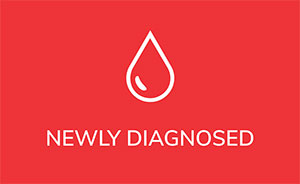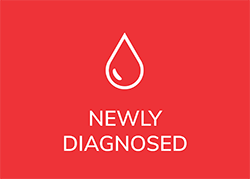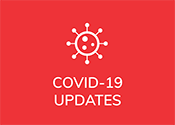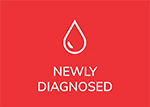Medically Reviewed by Brian Koffman, MDCM (retired), MSEd
CLL patients, with their impaired immunity, are not only at risk for respiratory infections but also serious and prolonged gut problems from norovirus.
Norovirus infection typically causes a very unpleasant day or two, but usually resolves on its own without the need for treatment. However, in chronic lymphocytic leukemia / small lymphocytic lymphoma (CLL / SLL) patients, there is a risk of more severe and chronic disease.
Let’s review the general facts and what’s published about immunocompromised people, including those with CLL / SLL.
Epidemiology:
- Norovirus is the most common viral cause of epidemic gаѕtrοеnteritis in the world.
- It used to be called “winter vomiting disease” because vomiting is the most common symptom, and although it can occur all year long, it is more prevalent in the winter.
- There are approximately 20,000,000 cases annually in the USA, and maybe many more are missed.
Transmission:
- The fecal-oral route quickly spreads it, and as few as 10 viruses are needed to cause an infection.
- The incubation period is 24 to 48 hours.
- Spread is usually from one infected person to another.
- Viral shedding in the stool is worse in the first two days but typically lasts up to a month. In CLL and other immunocompromised patients, it can last several months.
- Recent research suggests it is spread by aerosol if one is near someone vomiting or flushing the toilet. Lowering the lid doesn’t prevent the virus from escaping.
- Asymptomatic disease in adults and children is common, and the asymptomatic carriers can spread the infection.
- It can also be transmitted through contaminated food and water or by touching contaminated surfaces and then touching your mouth.
- Outbreaks have occurred due to the contamination of leafy greens, fresh fruits, and especially raw shellfish such as oysters.
- Sites of outbreaks include but are not limited to, schools, daycare centers, prisons, cruise ships, resorts, military camps, backpacking and rafting trips, and, of course, hospitals and other healthcare facilities.
- Norovirus is very stable on surfaces: it is not killed by freezing or heating to 140 °F or by standard commercial chlorine or alcohol-based cleansers.
- Because of the multiple subtypes, repeated infections are common.
- Seven out of ten infections are now caused by the new variant G11.17 this year, which is much more contagious. With the prior strains, one sick patient would likely infect two others. Now, the number is nine who will come down with norovirus.
Symptoms:
- Onset is usually sudden and severe.
- Nausea and vomiting are the most common symptoms, but watery (not bloody) diarrhea with 4-8 stools a day and abdominal pain are also typical.
- About half of those infected get a fever, muscle pains, headaches, and malaise. These symptoms are more common in the immunocompromised.
- Most feel better in a day or two without any more than supportive treatment. But in CLL patients, symptoms can occasionally become chronic with weight loss and prolonged profuse watery diarrhea.
- At least one severe case has been reported in a patient who was never treated for their CLL. Low immunoglobulin levels may increase the risk of a chronic infection.
Diagnosis:
- When there is a classic outbreak, the diagnosis is usually presumptive. In most cases, confirmatory testing is not needed.
- If diarrhea persists in a CLL / SLL patient, a molecular test for the virus in the stool is then recommended.
Treatment:
- There are no specific antiviral therapies.
- Copious oral rehydration and small, easily absorbed meals are the backbone of treatment.
- The benefits of probiotics and zinc are not proven.
- Medication for vomiting and diarrhea can be helpful in more severe or prolonged cases.
- For severe chronic norovirus, experimental treatments include oral, enterally delivered human immunoglobulins and off-label use of drugs that might have antiviral activity.
- Vaccines and monoclonal antibodies are in development.
Prevention:
- Hand hygiene and surface cleaning are critical.
- Hand sanitizers do NOT kill norovirus. Handwashing for at least 20 seconds with warm water is needed.
- Surfaces can be cleaned with 5 to 25 tablespoons of household bleach per gallon of water.
- The EPA lists other effective cleanershttps://www.epa.gov/pesticide-registration/epas-registered-antimicrobial-products-effective-against-norovirus-feline.
- Use rubber gloves with any cleanser.
Conclusions:
All CLL / SLL patients are immunosuppressed, regardless of their treatment status, so norovirus can hit them harder and last longer than it does for most. However, chronic or severe infections are rare, and good hygiene and hand washing (but not hand sanitizing) can prevent most problems.

















